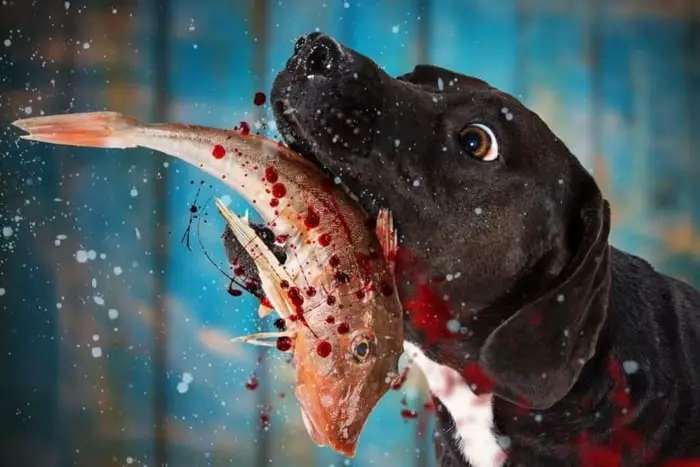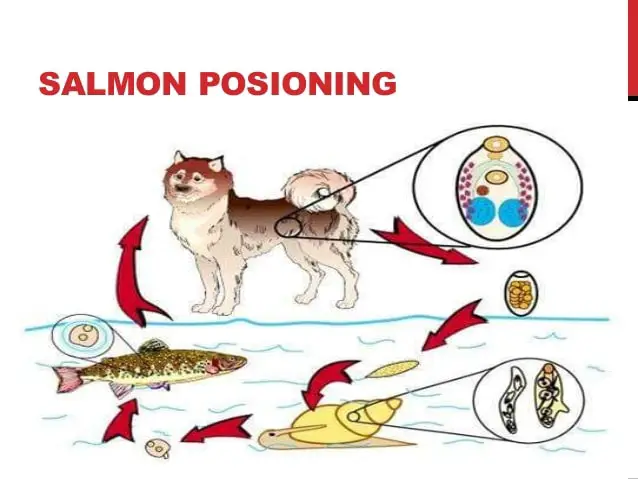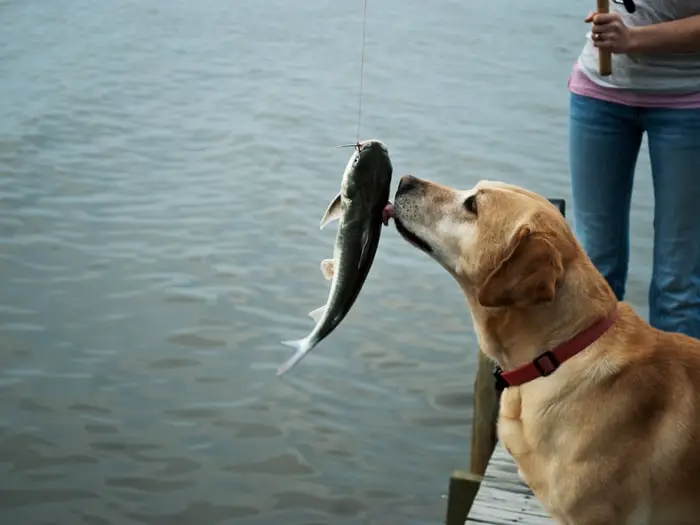Salmon poisoning disease is an acute infectious, non-contagious febrile disease of dogs caused by two rickettsiae, Neorickettsia helminthic and the Elokomin liver fluke agent. The disease is characterized by severe depression, extreme thirst, and frequent vomiting. Salmon poisoning in dogs is also called the Fish disease and is a potentially fatal condition seen in dogs who have ingested various types of raw fish.
Essential Information on Salmon Poisoning
Salmon poisoning is a common disease of dogs that live on raw or cooked fish with their diet. The organisms can be transmitted by ingestion of fish infested with trematode (Nanophyetus salmincola) metacercariae. Neorickettsia helminthoeca can be found in all stages of the trematode life cycle, from egg to adult fluke.

Transmission of Salmon Poisoning in Dogs
If your dogs ingest raw fish containing flukes infected with the rickettsial organism, salmon poisoning disease will occur. The signs of salmon poisoning are typically seen within one week of ingesting the raw fish, although longer delays have been recorded.

Some Common Symptoms of Salmon Poisoning
If you are not too sure of proper treatment, the disease is usually fatal within two weeks after exposure. The symptoms include:
- The sudden rise is of body temperature more significant than 40° C depression and anorexia.
- Vomiting and diarrhea accompanied by weight loss.
- Dehydration.
- Hypokalemia.
- Extreme thirst.
- Severe nasal and mucopurulent ocular discharge occurs in some dogs.
- Terminally, weight loss may be severe, and hemorrhagic enteritis.
- Progressive lymph node enlargement and splenomegaly.
- If your untreated dogs, death usually occurs 7 to 10 days after the onset of the clinical sign.
Diagnosis of Fish Diseases in Dogs
If you know your pet has ingested raw fish and it exhibits any types of symptoms, in that situation, you immediately contact your veterinarian.
Your vets analyze the history and clinical signs and are sure to perform the confirmatory diagnosis. The confirmatory diagnosis of salmon poisoning disease can be implied by the findings of operculated trematode eggs in dog feces.

Your vets examine the fecal samples to detect the parasitic eggs by direct fecal smears or the sugar flotation technique. Identification of characteristic intracytoplasmic rickettsial inclusion bodies on a Giemsa-stained lymph node aspirate, particularly in mononuclear phagocytic cells, your vets can be used to confirm the disease.
How to Treat Salmon Poisoning in Dogs?
The disease is treated with an antibiotic that is doxycycline or tetracycline, or oxytetracycline.
In additional treatment, some times needed such as fluid therapy or anti-nausea medication.
Fluid replacement therapy and other measures to control diarrhea for your dogs.
Prevention and Control of Fish Disease in Dogs
The best treatment for salmon poisoning is prevention. To prevent the disease, keep your pets from feeding on raw infected fish. Proper freezing, that is -20 degrees C or thoroughly cooking fish, destroys the organisms.